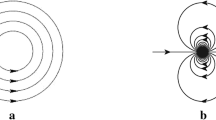Abstract
With the goal to improve marine traffic and evasion of any setback, the automotive industry is pushing towards intelligent vehicles. One of the significant difficulties is to identify dangerous situations and respond appropriately so as to stay away from or moderate mishaps. This requires foreseeing/predicting the feasible advancement of the present traffic circumstance and surveying how perilous that future circumstance may be. This paper is an overview of existing techniques for forecast and hazard appraisal for colossal ships on the ocean. A procedure of deciding if at least two bodies are reaching at least one focal point is impact recognition or collision detection. Crash discovery is an indivisible piece of computer graphics, stimulations and apply autonomy. This paper gives a complete characterization of a collision detection writing into the two stages, and we have endeavoured to clarify a portion of the current algorithm which is difficult to translate.
Access this chapter
Tax calculation will be finalised at checkout
Purchases are for personal use only
Similar content being viewed by others
References
Li Y, Guo Z, Yang J, Fang H, Hu Y (2018) Prediction of ship collision risk based on CART. IET Intell Transp Syst 12(10):12
Hexeberg S, Flaten AL, Eriksen B-OH, Brekke EF (2017) AIS-based vessel trajectory prediction. In: 20th International conference on information fusion, Xi’an, 10–13 July 2017
Wang X, Zheng R, Simsir U, Xiao Y (2016) An intelligent collision avoidance algorithm research. In: 9th International congress on image and signal processing, BioMedical Engineering and Informatics (CISP-BMEI)
Kao S-L, Su C-M, Cheng C-Y, Chang K-Y (2007) A new method of collision avoidance for vessel traffic service. In: International conference maritime technology
Murray B, Perera LP (2018) A data-driven approach to vessel trajectory prediction for safe autonomous ship operations. In: 13th International conference on digital information management (ICDIM)
Wu F, Spong R, Wang G (2004) Using numerical simulation to analyze ship collision. In: 3rd International conference on collision and grounding of ships (ICCGS), Izu, 25–27 Oct 2004
Johansen TA, Perez T, Cristofaro A (2016) Ship collision avoidance and COLREGS compliance using simulation-based control behaviour selection with predictive hazard assessment. IEEE Trans Intell Transp Syst
Lei P-R, Tsai T-H, Wen Y-T, Peng W-C (2017) A framework for discovering maritime traffic conflict from AIS network. In: 19th Asia-Pacific network operations and management symposium (APNOMS)
S Ren (2010) Evaluation of ship traffic control safety based on analytic hierarchy process. In: International conference on intelligent computation technology and automation
Zhang W, Zheng Y (2011) Intelligent ship-bridge collision avoidance algorithm research based on a modified gaussian mixture model. In: International conference on multimedia technology, Hangzhou, 26–28 July 2011
Brown A, Chen D (2002) Probabilistic method for predicting ship collision damage. Oceanic Eng Int 6(1):54–65
Okazaki T, Terayama M, Nishizaki C (2018) Feasibility study for predicting collision possibility sea area for each ship by using support vector machine. In: IEEE international conference on systems, man, and cybernetics (SMC)
Rao SN, Balakrishnan A (2017) Harnessing low-cost marine internet for collision avoidance of vessels at sea. In: International conference on wireless communications, signal processing and networking (WiSPNET), Chennai, 22–24 Mar 2017
Lei P-R, Tsai T-H, Wen Y-T, Peng W-C (2017) “ConflictFinder: mining maritime traffic conflict from massive ship trajectories. In: 18th International conference on mobile data management
Xuan S, Xi Y, Huang C, Hu S, Zhang L (2017) Spatial markov chain simulation model of accident risk for marine traffic. In: 4th International conference on transportation information and safety (ICTIS), Banff, 8–10 Aug 2017
Kuwata Y, Wolf MT, Zarzhitsky D, Huntsberger TL (2014) Safe maritime autonomous navigation with COLREGS, using velocity obstacles. IEEE J Oceanic Eng 39(1)
Pallotta G, Vespe M, Bryan K (2013) Traffic knowledge discovery from AIS data. In: 16th International conference on information fusion, Istanbul, 9–12 July 2013
Ahn J-H, Rhee K-P, You Y-J (2012) A study on the collision avoidance of a ship using neural networks and fuzzy logic. Appl Ocean Res 37:162–173
Simsir U, Amasyah MF, Bal M, Celebi UB, Ertugrul S (2014) Decision support system for collision avoidance of vessels. Appl Soft Comput 25:369–378
Mou JM, van der Tak C, Ligteringen H (2010) Study on collision avoidance in busy waterways by using AIS data. IEEE Ocean Eng 37(5):483–490
Author information
Authors and Affiliations
Corresponding author
Editor information
Editors and Affiliations
Rights and permissions
Copyright information
© 2021 Springer Nature Singapore Pte Ltd.
About this paper
Cite this paper
Roy, N. (2021). Prediction of the Ship Collision Point—A Review. In: Hemanth, D., Vadivu, G., Sangeetha, M., Balas, V. (eds) Artificial Intelligence Techniques for Advanced Computing Applications. Lecture Notes in Networks and Systems, vol 130. Springer, Singapore. https://doi.org/10.1007/978-981-15-5329-5_27
Download citation
DOI: https://doi.org/10.1007/978-981-15-5329-5_27
Published:
Publisher Name: Springer, Singapore
Print ISBN: 978-981-15-5328-8
Online ISBN: 978-981-15-5329-5
eBook Packages: Intelligent Technologies and RoboticsIntelligent Technologies and Robotics (R0)




